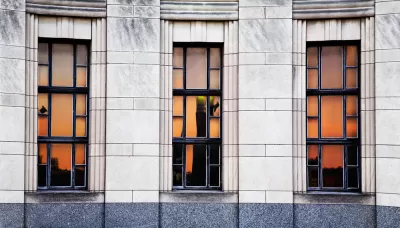The National Trust for Historic Preservation has revealed its annual list of the most endangered places in the country. See anything you might miss when it's gone and can never come back?

"The National Trust for Historic Preservation today unveiled its 2014 list of America’s 11 Most Endangered Historic Places®, an annual list that spotlights important examples of the nation’s architectural, cultural and natural heritage that are at risk of destruction or irreparable damage. More than 250 sites have been on the list over its 27-year history, and in that time, only a handful of listed sites have been lost," according to a press release from the National Trust for Historic Preservation released on June 23, 2014.
"The National Trust’s 27th annual list includes: Tallahassee’s Spring House, the only private home designed by Frank Lloyd Wright in the state of Florida that is now badly deteriorating; Shockoe Bottom in Richmond, Virginia, a major slave trading center in the 19th century that includes remnants of the jail in which Solomon Northup—from “12 Years a Slave”—was held; The serene vistas of the Palisades in New Jersey, threatened by a proposed office tower that would permanently mar its viewshed; and for the first time in the 27-year history of the list, two sites from the same city are included: Cincinnati’s iconic Art Deco Union Terminal, as well as Cincinnati’s impressive Music Hall. Both of these buildings are integral pieces of Cincinnati’s historic fabric, and need large-scale restorations to return to their original grandeur."
Cincinnati shows up on the list twice, compelling local coverage from the Cincinnati Business Courier. In 2013, the same publication took an in-depth look at the efforts to save the Union Terminal.
Although the National Trust is right to claim success in most of the efforts to preserve the places that have appeared on the list, the 2013 list included one famous site that is still very much up in the air, the Houston Astrodome.

Trump Administration Could Effectively End Housing Voucher Program
Federal officials are eyeing major cuts to the Section 8 program that helps millions of low-income households pay rent.

Planetizen Federal Action Tracker
A weekly monitor of how Trump’s orders and actions are impacting planners and planning in America.

Ken Jennings Launches Transit Web Series
The Jeopardy champ wants you to ride public transit.

Rebuilding Smarter: How LA County Is Guiding Fire-Ravaged Communities Toward Resilience
Los Angeles County is leading a coordinated effort to help fire-impacted communities rebuild with resilience by providing recovery resources, promoting fire-wise design, and aligning reconstruction with broader sustainability and climate goals.

When Borders Blur: Regional Collaboration in Action
As regional challenges outgrow city boundaries, “When Borders Blur” explores how cross-jurisdictional collaboration can drive smarter, more resilient urban planning, sharing real-world lessons from thriving partnerships across North America.

Philadelphia Is Expanding its Network of Roundabouts
Roundabouts are widely shown to decrease traffic speed, reduce congestion, and improve efficiency.
Urban Design for Planners 1: Software Tools
This six-course series explores essential urban design concepts using open source software and equips planners with the tools they need to participate fully in the urban design process.
Planning for Universal Design
Learn the tools for implementing Universal Design in planning regulations.
Ada County Highway District
Clanton & Associates, Inc.
Jessamine County Fiscal Court
Institute for Housing and Urban Development Studies (IHS)
City of Grandview
Harvard GSD Executive Education
Toledo-Lucas County Plan Commissions
Salt Lake City
NYU Wagner Graduate School of Public Service



























